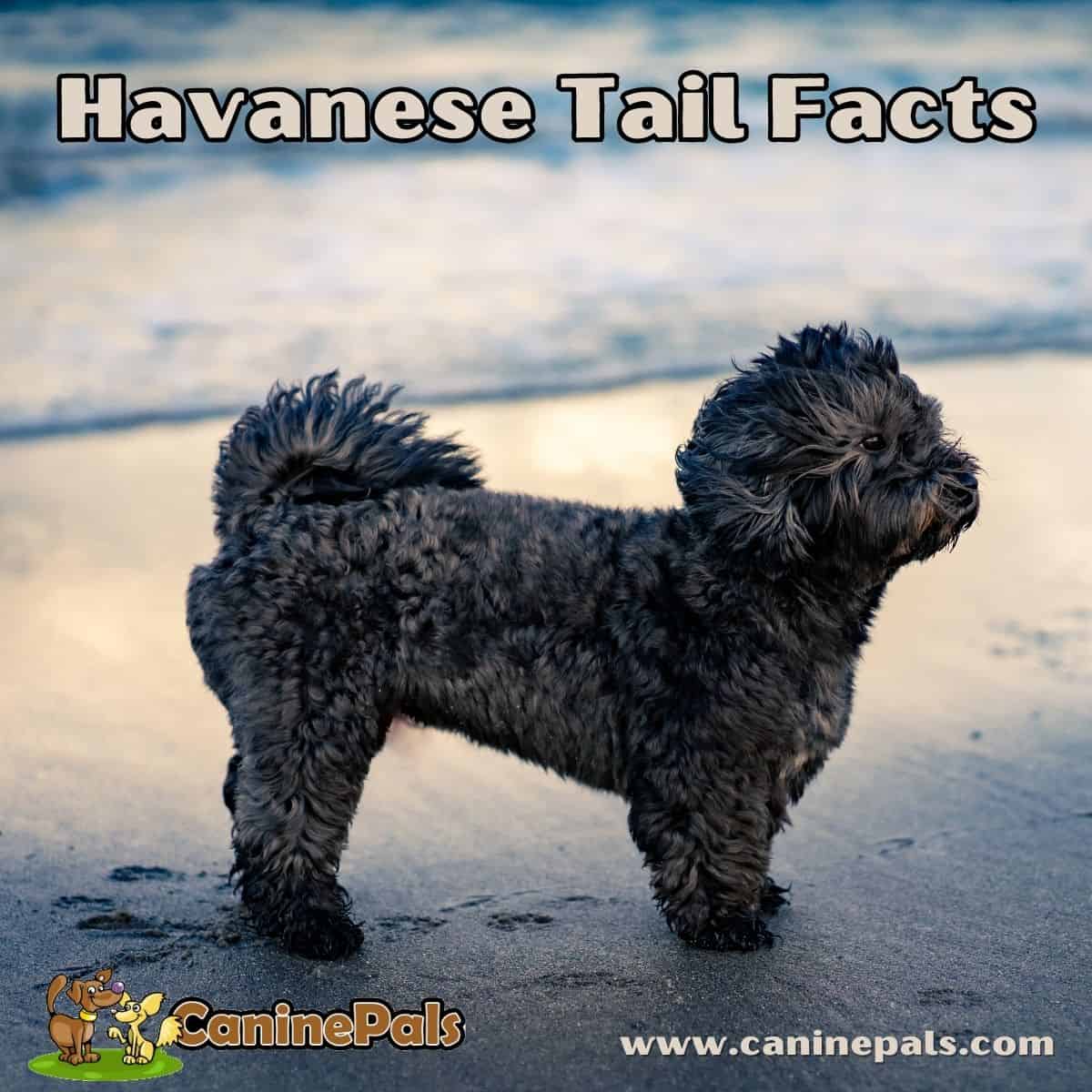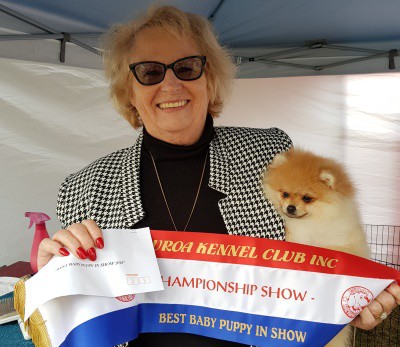Last Updated on March 19, 2024 by Denise Leo. Post first published on August 21, 2023.
Explore the characteristics and care tips for the distinct Havanese tail. Discover why it’s an essential trait of this lovable dog breed.
The Unique Tail of the Havanese Breed
When you think of a Havanese dog, you probably envision its silky coat, expressive eyes, and signature tail. The Havanese tail, often arching over the back with a gentle curve, isn’t just a charming characteristic; it’s a breed standard. This post delves into the fascinating aspects of this particular tail and why it holds such significance for the Havanese.
Characteristics of the Havanese Tail
The Havanese tail is plume-like, adorned with long, flowing fur that dances as the dog moves. The tail often arches over the back, resting on it or slightly off to the side, forming a semi-circle. This arch is neither too tight nor too loose, but it is distinctive enough to be noticed at a glance.
The Significance of the Tail Arch
Why is such emphasis placed on this tail? Historically, breeders and dog show enthusiasts have paid close attention to this trait. The curve of the Havanese tail is one of the breed standards recognized by major kennel clubs.
A properly arched tail showcases the breed’s lineage and purity.
Additionally, the tail plays a role in communication. The position and movement of a dog’s tail can express everything from happiness and excitement to caution or uncertainty.
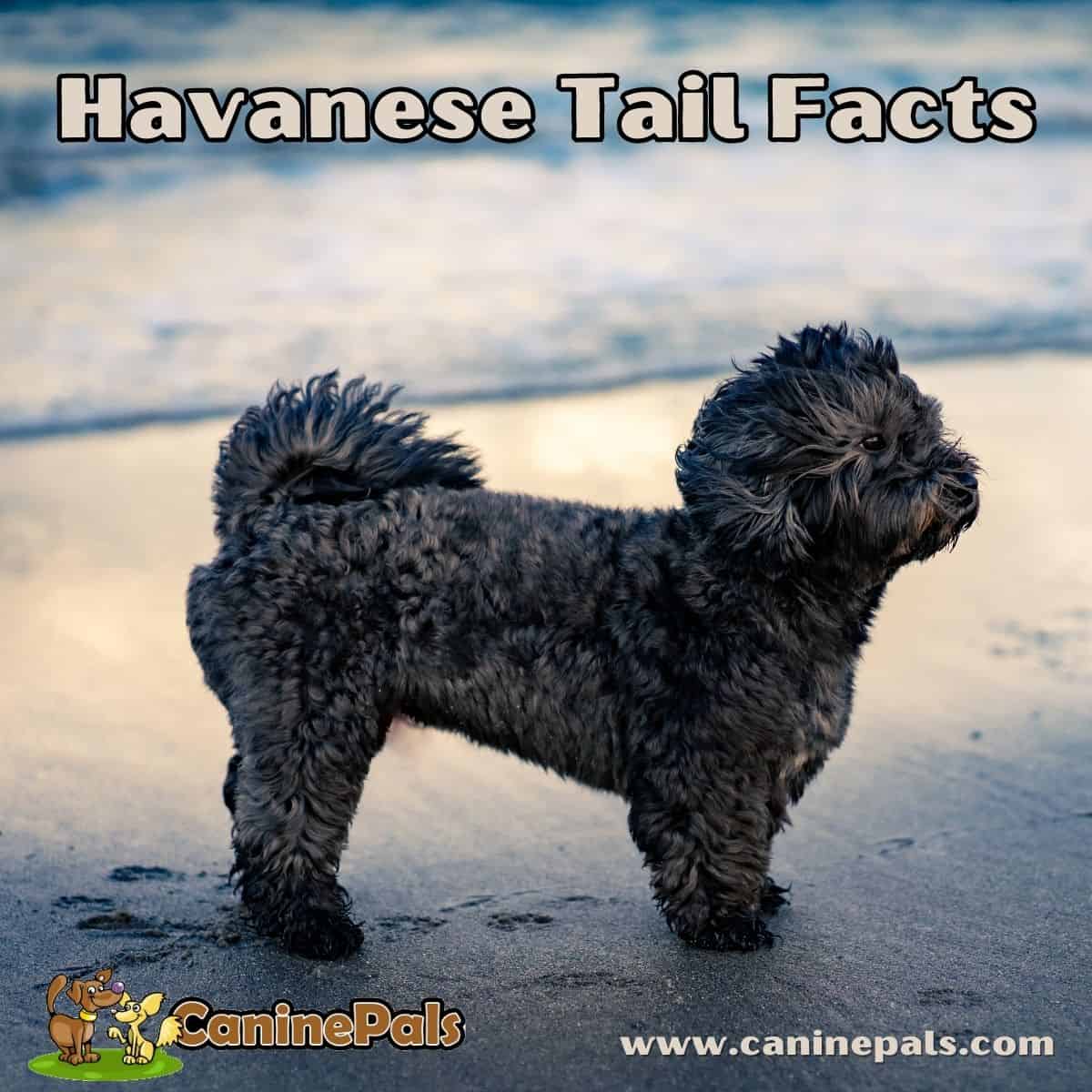
Havanese Tail Care Tips
Due to the length and density of the fur on the Havanese tail, it requires regular grooming to keep it looking its best and free from tangles:
- Regular Brushing: Brush the tail at least every other day using a wide-toothed comb or a slicker brush to prevent matting.
- Trimming: Occasionally, you might need to trim the hair, especially if it’s dragging on the ground or collecting dirt.
- Bathing: Ensure the tail is thoroughly rinsed and dried after baths to prevent residue build-up.
- Check for Pests: The dense fur on the Havanese tail can provide a sheltered spot for small pests such as fleas or ticks to hide. Regularly inspect and treat as necessary.
Havanese Tail Grooming
Generally, a Havanese tail is kept long and untouched, with its beautiful, feathery plume being one of its most captivating features. To maintain its allure, brushing the coat daily or at least twice a week is essential.
Using a specific brush designed for long-haired breeds, like the Havanese, can help prevent matting. Regular washes with high-quality shampoo and a nourishing conditioner are recommended to keep your Havanese’s coat and tail pristine.
Havanese Dog Grooming Styles
Various Havanese grooming styles can be chosen for your Havanese, including:
Havanese Puppy Cut: The Havanese coat is uniformly trimmed, leaving it about 1-2 inches in length.
Teddy Bear Cut: This style resembles the puppy cut but retains a slightly longer 3-inch length, with the edges giving a rounded finish. Many pet owners opt for this easy to maintain trim for their dog.
Kennel Cut: This approach preserves most of the natural hair length, only trimming areas prone to tangling or matting.
Pro Tip: Keeping a grooming kit handy can aid in preserving your dog’s lustrous coat and ensure the tail remains neat and tangy-free. I have found this particular kit excellent (It’s our go-to for my show, Pomeranians).
While multiple styling options exist, the tail is typically brushed and trimmed. The length you trim your Havanese’s silky fur is entirely up to your preference.
If your Havanese’s tail starts developing mats, consider giving it a trim or slightly thinning it out.
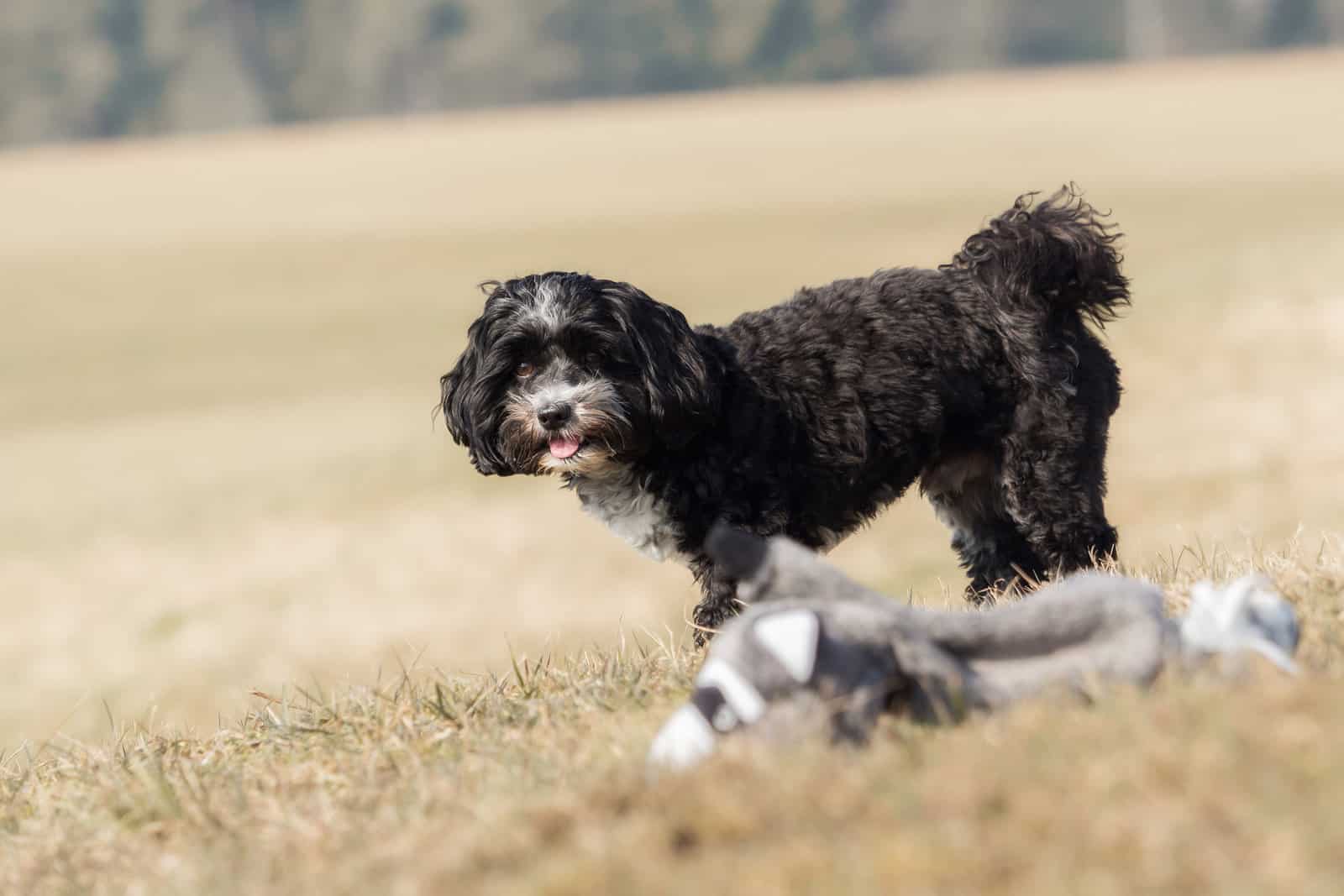
Guidance for Addressing Havanese Tail Issues
Drooping Havanese Tail:
If your dog occasionally lowers its tail, it may signal submission or remorse. However, a persistent downward tail position, especially with evident discomfort, could point to a “limber tail” or a luxating patella.
Understanding Luxating Patella in a Havanese:
Consistent tail drooping or frequent downward positions beyond its normal resting stance suggest a luxating patella. Essentially, this term denotes a dislocated kneecap in the hind legs.
Additional symptoms include your dog extending its back legs and circling. This issue is prevalent among smaller breeds and often rectifies after a few days of relaxation and stretching.
A veterinarian’s consultation is prudent if the discomfort persists or seems severe. Surgical intervention might be advised in recurring cases, typically offering a permanent solution.
Limber Tail – What Is It and How to Address It:
A limp, unnatural-looking hanging tail in your Havanese may signify a “limber tail.”
Also referred to as swimmers tail, frozen tail, dead tail, broken wag, or cold tail, the formal diagnosis is Acute Caudal Myopathy.
This condition might manifest after intense physical activity, prolonged tail wagging, excessive swimming, exposure to cold and wet conditions, extended crate confinement, or frequent tail banging against surfaces.
Symptoms encompass tail pain, swelling, and sitting difficulties. Typically, a few days of rest alleviates the issue. However, it’s vital to curtail physical activity if your pet shows these signs.
If pain is apparent, seek veterinary guidance. Identifying and sidestepping the causative activity, like cold water immersion or lengthy crate stays, is advisable.
Havanese Tail Infection (Tail Tip Necrosis):
While a severe concern, this is a rarity for Havanese. Recognizing it promptly can prevent irreversible damage.
Causes encompass recurrent tail battering against bacteria-rich objects. Bacterial infiltration through an open wound can instigate an infection, deteriorating tissue and potentially causing necrosis.
Signs to watch out for include:
- Tail-end hair loss.
- Excessive itching.
- Discolored or brittle skin.
- An unpleasant odor.
- Persistent tail biting.
Immediate veterinary consultation is crucial if any symptoms arise.
Surgical amputation of the infected tail portion might be necessary. Though distressing, preventing the infection from jeopardizing your pet’s health is essential.
Preventing Fecal Adherence to Havanese Fur:
Long-haired breeds often grapple with this odorous issue. Neglect can escalate into severe health complications.
Here’s how to ensure your pet’s posterior remains clean:
- Regularly trim the hair around their rear.
- Keep cleaning wipes ready for immediate clean-ups.
- Incorporate more fiber into their diet.
- Monitor for infections or parasites, such as worms.
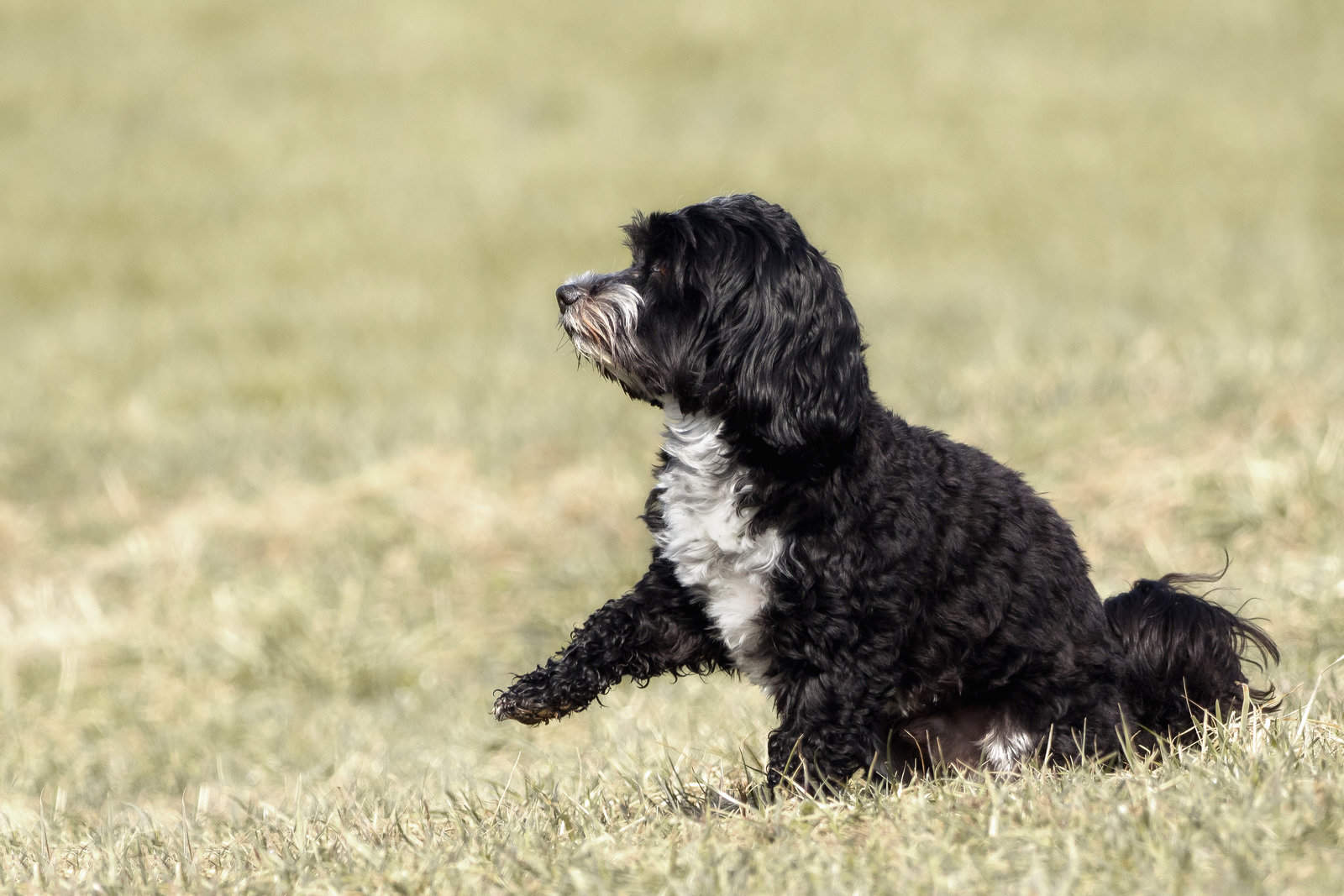
Decoding the Havanese Tail Movements and Their Communication
The tail of a Havanese is a primary means of communication, swaying for many reasons. Tail wagging doesn’t solely express joy; it can also indicate feelings like anxiety or trepidation. To truly grasp the message behind a wag, one should consider the entirety of the dog’s body language — from its ears and eyes to its stance. This holistic observation will provide clarity on your Havanese’s emotional state.
Below are some potential messages your Havanese might be relaying through its tail:
– Relaxed and At Ease: Tail in its normal resting position. This can be seen when asleep, resting, or leisurely walking.
– Greeting or Affection: Typically, an enthusiastic and broad wag, often paired with direct eye contact, approaching you or seeking your attention energetically.
– Inquisitiveness or Uncertainty: Gentle wagging towards their rear end. This is accompanied by exploratory sniffing, focused observation, or seeking your reassurance.
– Apprehension or Fear: Tail tucked between their legs, perhaps with subtle movements. You might notice a tensed body, downcast eyes, and retracted ears. This could also imply a submissive posture.
– Aggression: Tail held high and stiffened. The dog’s overall posture would be alert, with direct eye contact, and paired with vocal cues like barking.
– Joy and Enthusiasm: Vibrant, uninhibited tail wags. You’ll notice their relaxed demeanor, cheerful face, and playful circling, especially around enticing objects like toys or treats.
Furthermore, research has indicated the direction of a dog’s tail wag can denote its emotional state. Wagging to the right can suggest positive sentiments like contentment, whereas a leftward sway might express negative feelings, such as unease.
For most Havanese, tail wagging is an innate form of expression. However, if you find your Havanese seldom or never wags its tail, don’t fret. It might be a unique trait of their personality, genetics, or tail structure. Still, any drastic change in tail movement could signal health concerns, making a veterinary consultation advisable.
If there’s a sudden halt in your Havanese tail wagging, external factors might be at play. Environmental changes or recent relocations can induce nervousness, requiring adjustment time.
Every Havanese has its own “communication style.” If yours isn’t an avid tail-wagger, familiarize yourself with their other behavioral cues to discern their emotions and needs.
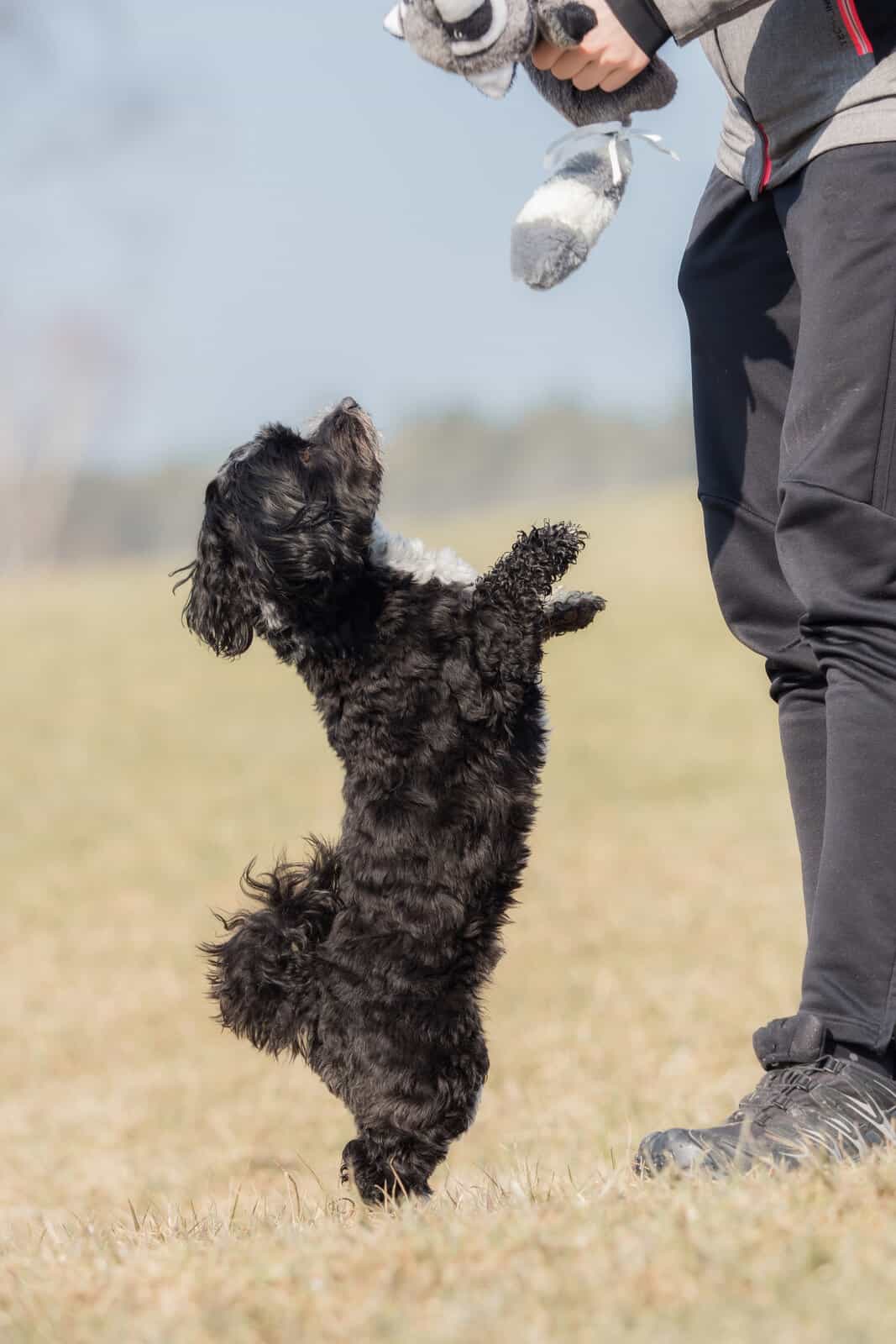
FAQs
1. Why does my Havanese not have a tail arched over its back?
Not all Havanese dogs will have a tail that perfectly arches over their back, and that’s okay. Genetics play a role, and not meeting this breed standard doesn’t diminish your pet’s worth or lovability.
2. Can I trim the hair on my Havanese tail?
Yes, occasional trimming can help keep the tail neat, especially if it drags on the ground or collects dirt.
3. How can I tell if my Havanese’s tail is healthy?
A healthy tail is free from open sores, lumps, or bald patches. The skin should be smooth without any signs of infection or inflammation.
4. Do All Havanese Have Tails?
Both purebred Havanese and their mixed counterparts possess tails. Typically, a Havanese boasts a lengthy tail that elegantly arches upward, resting over its back.
The tail’s tip ideally settles just beside the rear. If your Havanese or its mixed variant has an exceptionally short tail, it might have been naturally born with it due to potential genetic variations, or it could have been docked.
5. How Long Are Havanese Tails?
Havanese tails typically measure between 3 to 6 inches in length. Their shape and curve can be likened to that of a small banana.
6. Do Havanese get their tails docked
Havanese dogs typically retain their full-length tails, as docking isn’t common for this breed. However, tail docking might occur for Havanese mixes if breeders adhere to standards set for the other dog breed in the mix.
Historically, the Havanese was cultivated as a companion and lap dog, making tail docking unnecessary for practical purposes.
In contrast, some smaller breeds, like the Yorkshire Terrier and Poodles, often undergo tail docking for aesthetic reasons. These breeds, originally intended as working dogs, had specific roles. For instance, Yorkshire Terriers were tailored to tackle and control rodent populations for coal miners.
For such working breeds, a shorter tail reduces risks of entanglement or injury during their duties. Some modern-day owners opt to retain this historically short tail look, even if their pets now serve primarily as companions.
The AKC (American Kennel Club) sets various other breeds standards. Breeds like Yorkies and Poodles have AKC-recognized standards that favor docked tails. Docked tails are banned in many countries.
Therefore, Havanese breeders who wish to uphold these standards might choose to dock their puppies’ tails. If you come across a Havanese mix, like a Havapoo or Havapin, they might have a docked tail, but it’s an optional procedure for them.
Do Havanese have curly tails?
Havanese typically don’t possess curly tails. Instead, their tails should form an arch, starting from their base, extending up and over their back. Tail curling with a tighter curl could be considered a genetic or breeding deviation.
Some Havanese enthusiasts have observed their dogs having tails that curl more than what’s typical, resembling the tight curl of a pig’s tail. If your Havanese displays such a characteristic, there’s no need for immediate concern. However, discussing it with your veterinarian during their next check-up is wise for reassurance.
If your Havanese has this curly tail trait, it might be best to refrain from breeding them. This characteristic can be inherited, becoming more pronounced with each subsequent generation.
An added concern for owners of Havanese with curlier tails is its grooming challenge. Such tails might experience increased matting at their base, requiring more attentive care.
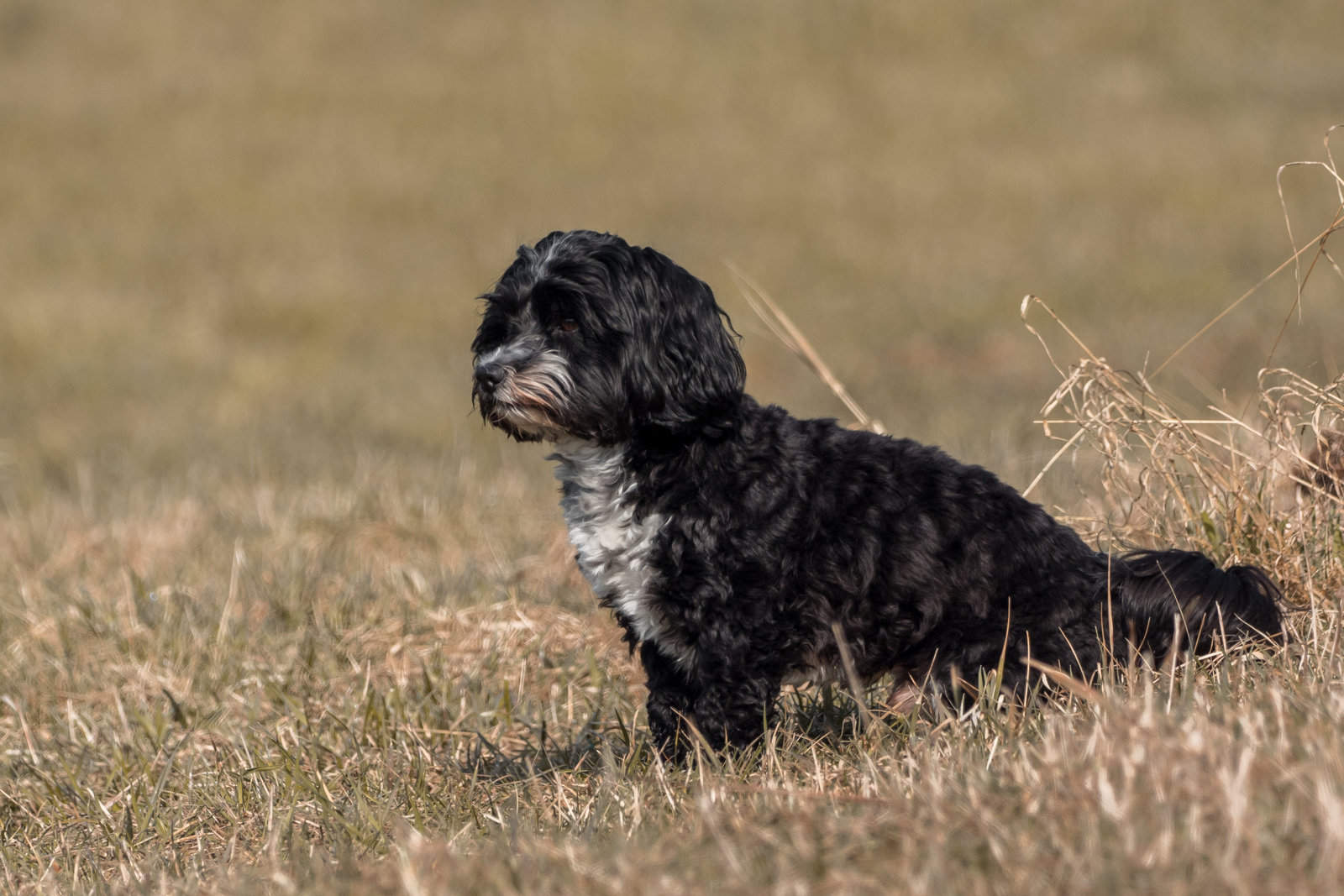
Havanese Tail Facts Conclusion
With its distinct arch and plume-like appearance, the Havanese tail is a hallmark of this beloved breed. While it holds historical and breed significance, it’s essential to remember that each Havanese is unique.
Whether or not your Havanese meets this breed standard, the bond you share and the joy they bring are what truly matter. Regular tail care ensures your Havanese looks its best and remains a happy, wagging presence.
Copyright CaninePals.Com. All Rights Reserved.
References and Further Reading:
[1] American Kennel Club, Havanese Information.
[2] Havanese Rescue Inc.
[3] American Havanese Club

